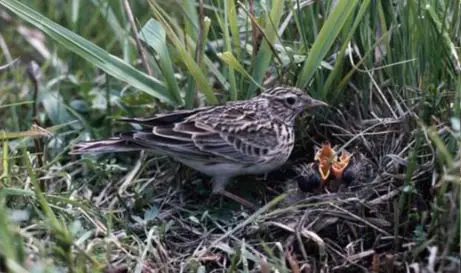The competitions were always held on Sunday, so about Saturday tea—time the lark in its box was hidden in the dry stone wall over ‘The Balk’, so it could hear other sky-larks sing. The cover was removed and brought home.
On the morning of the ‘sing’ the lark had to be collected from where it had been hidden the previous evening.
The skylark singing pubs in Batley were the Ringers Arms on East Street and the Borough Arms on Wilton Street.
Out of town pubs where skylark sings were held were the Cardingan Arms at Ardsley, the Railway Tavern at Drighlington, and the Clarendon on the Dewsbury—Leeds Road.
If the competition was held in a Leeds district public house it necessitated a walk up Scotchman Lane, to the top of Fountain Street, Morley and then by train to Leeds and the public house.
The skylarks were placed in their covered cages on the tap room window sill. When the dark canvas covers were removed, the lark that sang longest was the winner. The first prize was five shillings and second place two shillings and sixpence. The prize money came from the competition entrance fee and a ‘book’ was made so each member present could have a bet on his favourite bird.
Each bird was given a fancy name by its owner - the Batley Champion was a bird called ‘Nigger’. John Lumb had a bird called ‘Glorious Devon’ which sang non—stop for twelve minutes in the Railway Tavern at Drighlington.
This activity came to an abrupt end in 1935 when the police called for the club to be disbanded. Members were told that they could keep the birds they had, but no more were to be taken from their nests.
Bob Woodhead



